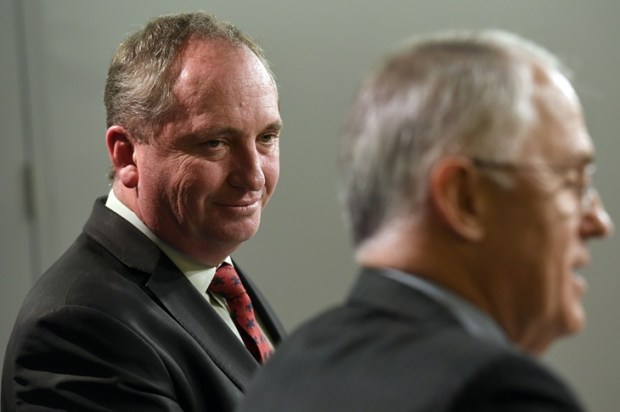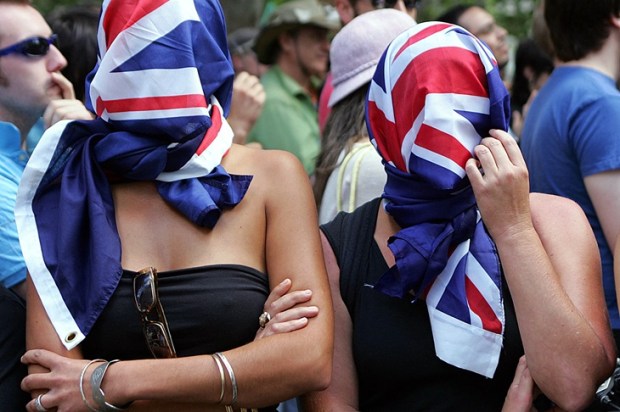I was born in Wahroonga. Attended school there. In the decades since, I have lived in and around the little village nestled beside the train station. It is a wealthy area with a perfectly warranted community expectation that public spaces will be kept immaculate. To that end, there was a period of time where Wahroonga station won award after award for its beautiful station (one of the last Australian garden stations in the state).
Being near the ‘Teal’ zone, Wahroonga has become a hopelessly virtue-signalling microcosm, with all the usual ‘we can save the planet’ nonsense creeping into the community (even though its residents continue to languish in mansions and own multiple luxury cars – one of which is probably a Tesla).
That’s all fine. Cosplay in a fantasy apocalypse if you want to.
What upsets me is the state of the heritage-listed train station (opened in 1890) and surrounding areas, which used to be a point of community pride. The sprawling fig trees shading the station, elaborate rose gardens, and manicured lawns (adorned with semi-tame rabbits and brush turkeys) were all part of the charm for an area with horrendous council rates despite an abundance of potholes and lack of footpaths. Even those of us who were significantly poorer than the average resident could enjoy the surrounds.
In 2010, five 100-year-old heritage fig trees were torn down from Wahroonga station by RailCorp (now Transport NSW) amid the horror and outrage of the community. I remember it. We couldn’t believe anyone would wilfully destroy one of the most beautiful areas on the train line. But they did. Heartlessly. Gone were the cool, shaded areas of the station. Instead, we have these pathetic ‘native’ trees that provide a few patches of ‘shelter’ that, thirteen years on, remain a crap, half-arsed insult to what we had before. No doubt people will blame the sudden increase in heat on ‘climate change’ rather than the butchering of fig trees.
The trees had to go because they were a ‘trip hazard’. A hazard so dangerous that people have been perfectly capable of navigating their roots for a hundred years.
RailCorp will be replacing the fig trees at Wahroonga Station to resurface the platform and prevent further structural damage. The roots of the trees are threatening the structural integrity of the platform and if left in place will continue to damage the heritage-listed station building, damage sewage systems and prevent future improvements to station facilities. The Heritage Council of NSW independently came to the same conclusion, and placed upon RailCorp a number of conditions for the removal of the trees. The issue has existed for two decades and can no longer be avoided.
There were plenty of solutions to fixing the infrastructure that didn’t involve destroying the trees. Professionals in the industry were writing in with simple solutions and offering their services, but it fell on deaf ears. Someone wanted those trees gone and they did not listen to the community.
Everyone’s keen on a ‘Voice’ these days, except if community voices dissent from the development ‘agenda’ which has outstripped any environmental concerns across Sydney. There has been a larger war against fig trees in Sydney, with the unforgivable removal of ancient trees planted to commemorate veterans felled to make way for car spaces and a tram line, including the irreplaceable Tree of Knowledge. Any chance councils and government bodies get, down go our trees.
Transport NSW loves the slogan: ‘Making NSW a better place to live, work and play.’ Yet all they seem to do is turn our stations and surrounding areas into deserts. Anything that harks back to the old, beautiful, lush colonial-era garden is under threat and the result is the worst state our stations have ever been in. Or maybe I’m wrong and it’s just a combination of laziness, inattention, and ‘budget cuts’. It all looks the same from the platform.
And yes, I am aware they recently spent a fortune putting in a new lift (twenty years too late) in one of the most over-engineered exercises I’ve ever seen. Entire nations have been built in the time it took them to erect a lift and a ramp and we still have an ugly barrier to the road and mismatched coloured pathways over the bridge. To finish it off, they came by and removed a large Camphor laurel that used to shelter the bridge over the station. Now, we’re forced to bake in the sun with the steps identifying as a furnace. Meanwhile, no one bothered attending to the nearby carpark where the weeds are hungrily reaching for the vehicles, becoming a spider-haven after dark.
Sitting at Wahroonga station today, it is not going to win any awards. Half of one side of the embankment has lost its topsoil. The gravel surface is thick with two-foot-high weeds that go all the way to the bridge – which is a far cry from the manicured and carefully attended lawns I remember from my childhood. The rose garden that was once the pride of the station is overgrown and poorly kept. There’s a dead tree withering amongst an unkempt mess of weeds and trees. Sure, someone has clipped a few of the low hedges, but there is no evidence of the love, care, and pride that was once put into the station. It has become an ‘asset’, not a community environment.
Why should we believe any of these organisations when they talk about ‘climate change’ and being ‘responsible citizens’ when they neglect the environments that they are paid to upkeep?
They are like Jordan Peterson’s ‘teenager’ who wants to save the world but can’t manage to make their own bed.
Along the outside fence of both Wahroonga and Waitara (the next station along) is a forest of weeds, vines, and suffocated trees adorned with litter. It is beyond disgusting. It looks like a third-world hovel. Half the things growing in that nightmare would attract a fine from council if they were found in a private garden.
Indeed, if someone left their front yard in this state, council would come in demanding they do a better job.
And there’s no use blaming ‘unstable weather’ for the state of the gardens. The whole way along the opposite side of the road are beautifully kept front gardens of private citizens and apartment buildings that are putting the local council and Transport NSW to shame. The more established these gardens become, the more pathetic and disgraceful the efforts of the community bodies appear.
People care about their local environment. Ratepayers and rail users are coughing up a fortune for filthy, unreliable trains that cost far more than they’re worth. The least these entities could do is look after the environments they are given.
But no. They spent our money plastering rainbows flags up and down the station steps, putting Pride stickers inside the trains, and issuing Big-Brother-level threats on their services for three years during Covid. There are still green ‘sit here’ stickers everywhere and notices asking travellers to support the union movement.
Transport NSW and Ku-ring-gai Council, before preaching to everyone about how wonderful you are – go and clean up your bloody stations. And no, that doesn’t mean ripping everything out in some kind of scorched-earth revenge attack. It means replanting the old figs, putting the topsoil back, building up the rock walls and relaying turf, planting some beautiful flowers, and creating an attractive line of hedges to hide the trains and shield residents from the noise.
In other words, use all that money that we give you, and take some pride in our public spaces. We deserve better.
And don’t you dare harm the rabbits and brush turkeys. They are part of our community too.

























